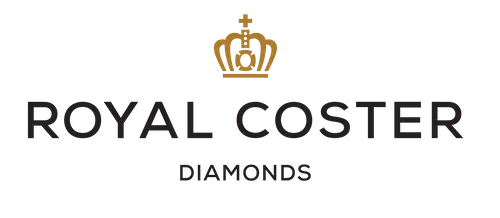-
Signature Jewelry
-
Fashion Jewelry
-
Watches
-
Sale
-
Tours & Workshops
- NL
- EN
Can’t find what you are looking for?
We are here to help Get in touch
- NL
- EN
Your shopping cart
Your Cart Is Empty
Discovering the Source of Diamonds
Diamonds are the result of crystallized carbon formed under extreme pressure and heat, conditions that are only found deep beneath the Earth's surface (150 to 200 kilometres underground). It takes anywhere from 990 million to 4.25 billion years to create a diamond. There are two ways of extracting diamonds. The first, is by volcanic eruption, which pushes the diamond from the depths of the earth to the surface. The second, and more common way, is mining.
The Diverse Methods of Diamond Mining
On average, miners have to move 250 tons of earth to find a single carat of diamond. There are multiple methods to mine diamonds. Open-pit mining is a method that requires miners to dig large holes, sometimes hundreds of meters deep. This removes many layers of soil and rock that have built up over millions of years, allowing minors to find the diamonds. Underground mining is more expensive compared to open-pit mining. This method is used when an open-pit mine is empty or when diamonds are too deep to reach with an open pit. Alluvial mining happens in riverbeds or along coastlines, where miners redirect water to reach diamond-rich deposits. By changing the water's path, they can uncover and extract diamonds. Lastly, marine mining uses large ships with special equipment to remove sediment from the ocean floor. The sediment is sorted on the ship, where diamonds are taken out and the rest is put back into the ocean.
Want to learn more about diamonds? Book a free tour in our diamond polishing factory in Amsterdam.
The most important diamond mines
The Jwaneng and Orapa diamond mines in Botswana are among the largest and most valuable in the world. Jwaneng is known as the richest diamond mine based on value, producing millions of carats of diamonds annually. Orapa, the largest diamond mine in the world by area, is an open-pit mine that gives a substantial amount of diamonds each year. In Russia, Udachny and Mir are prominent mines, with Udachny being one of the largest in the country and the world. and Mir, despite the closure of its large open pit, still active underground. The Venetia mine in South Africa is the largest in the country and significantly contributes to national diamond production. Argyle in Australia, known for its pink diamonds, was one of the most productive mines until its closure in 2020. In Angola, the Catoca mine, one of the largest kimberlite mines in the world, produces a large volume of diamonds. Finally, the Karowe mine in Botswana is renowned for discovering some of the largest and most valuable rough diamonds in recent years.
Despite the economic significance and impressive scale of operations in diamond mines, the diamond industry has a darker side. While these renowned mines contribute greatly to the global diamond supply and support local economies, there exists a parallel story of diamonds that fund conflict and human suffering. This brings us to the issue of blood diamonds, also known as conflict diamonds.

The history of Blood Diamonds
Blood diamonds, also known as conflict diamonds, are diamonds that were mined in areas of conflict and war. Civilians in these regions are often forced to work in horrible conditions, facing torture and exploitation. The term "blood diamonds" was made up by the United Nations to describe the negative consequences of the diamond trade in certain areas. These diamonds are mined by rebel groups and sold to fund military action against the country's government.
The Kimberley Process: Tackling the Problem
Worldwide concern over the problem of blood diamonds resulted in the Kimberley Process. In 2003, the European Union, 46 other countries, the United Nations, various NGOs, and human rights organizations came together in Kimberley, South Africa, to establish a set of rules to prevent the sale and purchase of blood diamonds. Since the establishment of the process, the trade of blood diamonds has fallen from 15% in the 1990s to less than 1% by 2010.
Ethical Diamond Sourcing at Royal Coster Diamonds
At Royal Coster Diamonds, we take great pride in being a reliable and ethical source for purchasing diamonds. Our company does not source any blood diamonds. Instead, we source conflict-free diamonds from Australia, Canada, Namibia, Russia, South Africa, and Tanzania. The profits from these diamond sales are used in a responsible way, such as investing in the country's infrastructure, education, and building hospitals near the diamond mining areas. We believe that a "good" diamond is one where the mining country's population benefits from the sales in some way.

